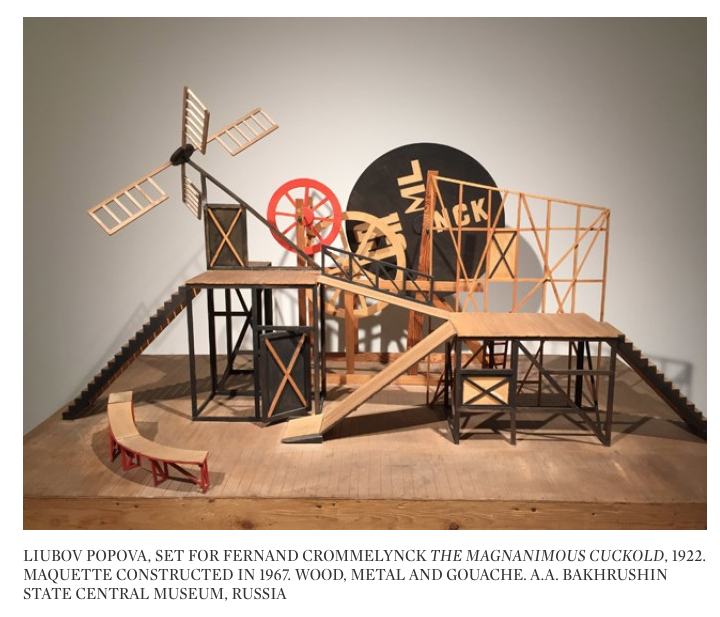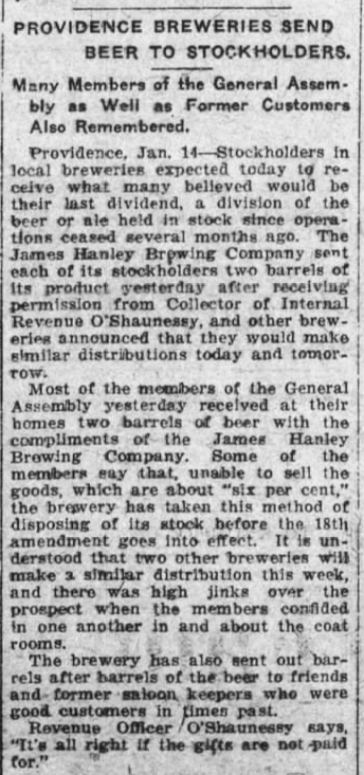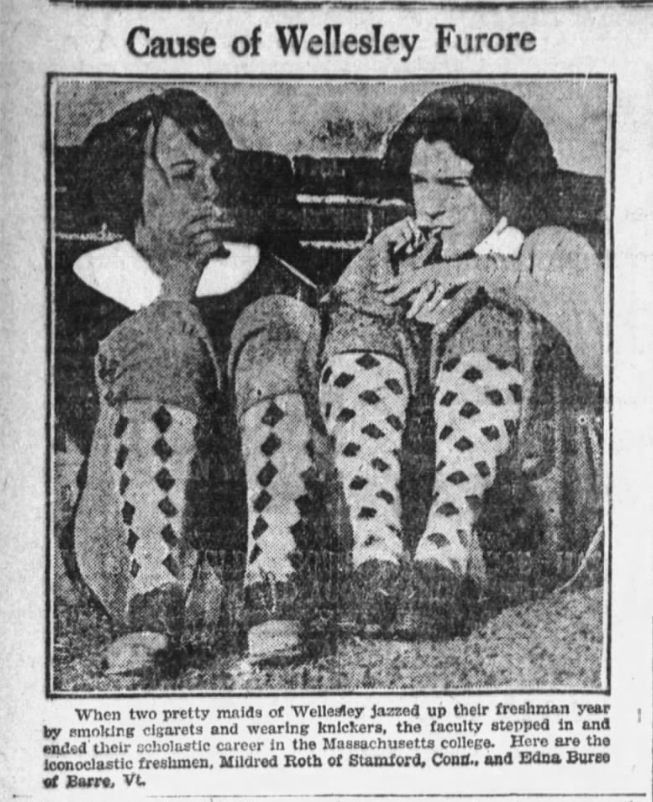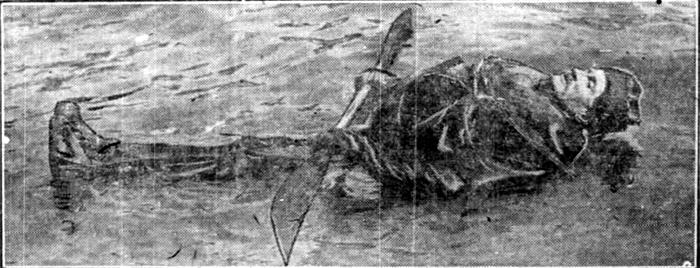1920s
Artwork Khrushchev Probably Would Not Have Liked 35

The artist's Wikipedia page.
Posted By: Paul - Thu May 27, 2021 -
Comments (0)
Category: Art, Avant Garde, 1920s, Russia
Buried Alive Experiment
1926: French journalist Paul Heuzé sealed himself in an air-tight coffin to investigate how fakirs performed this feat. He lasted one hour and fifteen minutes before signalling that he needed to be let out.More info about Heuzé at Wikipedia.

Illustrated London News - Dec 11, 1926

East Liverpool Evening Review - Dec 23, 1926
Posted By: Alex - Mon May 10, 2021 -
Comments (3)
Category: Experiments, 1920s
Combined hat and comb
In 1920, Alva Dawson of Florida was granted a patent for a "combined head covering and hair comb". In his patent he explained:I'm pretty sure it wasn't possible to use this hat-comb without rendering yourself very conspicuous.


Popular Science - Oct 1920
Posted By: Alex - Sun May 02, 2021 -
Comments (0)
Category: Patents, Headgear, 1920s, Hair and Hairstyling
Why the man of the future may have only one eye
1927: Scientist W.E. Bailey predicted that, in the far future, our descendants may have only "one large, central, cyclopean eye".Of course, who knows what humans may look like in a million years (if there are even any of us still around), but his argument sounds plausible enough to me (with my limited knowledge of neuroscience). Basically he argued that, over the past several million years, our brains have devoted more space to speech, and less to vision. Extrapolating that trend into the future, he concluded that the eventual merging of our eyes into one would be a more efficient use of the brain's resources, and so will probably happen.

Minneapolis Star Tribune - Dec 4, 1927
"Man's field of view," writes Mr. Bailey, "will become smaller and smaller. This, because his need of a wide field is growing less and less. This I say with full realization that we live in an age of automobiles, and that these vehicles render desirable a wide field of view. The automobile is probably a very transitory phenomenon. I even believe that, in the course of countless ages, the two human eyes will come closer together, the bridge of the nose will further diminish and sink (just as the animal snout, in man's line of descent, has been doing for vast aeons of time) and, finally, man's two eyes will again become one—just one large, central, cyclopean eye.
"It is likely that the merely servient (left) eye will shrink away (as the pineal eye has already done) so that the right eye will become the cyclopean. Certain it is that the left eye, even today, is being used less and less continually. Man's binocular and stereoscopic visions are being destroyed. That is the price he pays for his speech center.
"The great cyclopean eye, however, will regain stereoscopic vision by developing two maculae in the one eye, just in the fashion in which many birds have stereoscopic vision in each eye now. Although the field of view will then be narrower than now, the eye will probably be microscopic and telescopic; it will be exceedingly acute for colors, for motion, and for form; and finally, most important of all, it will probably be able to perceive as light many forms of energy which now produce in human eyes no sort or kind of perception.
"Because of the development of a speech center in man, there has come about what is called dominancy and serviency in human eyes, a phenomenon not found in other mammals. This means that, in the human, the brain does most of the seeing through one eye, even when both eyes are open. Dr. Thomas Hall Shastid, ophthalmologist of St. Luke's Hospital, Duluth, has found that from 95 to 100 per cent of the detail of any object comes through the right eye if the person be right-handed; while if the person be left-handed the left eye as a rule, but not always, takes up the major part of the detail. This condition, which he has been unable to observe in any other animal, may eventually result in consequences of vast importance to humanity."

Posted By: Alex - Sat Apr 17, 2021 -
Comments (5)
Category: Science, Anthropology, 1920s, Eyes and Vision
Liquid Dividends
What else could you do with your inventory on the eve of Prohibition?
Source: Fall River Daily Evening News (Fall River, Massachusetts) 14 Jan 1920, Wed Page 7
Posted By: Paul - Sun Apr 04, 2021 -
Comments (0)
Category: Censorship, Bluenoses, Taboos, Prohibitions and Other Cultural No-No’s, Freebies, Come-ons and Loss Leaders, 1920s, Alcohol
Do you eat enough candy?
... Caroline Hunt, noted specialist in Home Economics, has therefore recommended that candy be made a part of the "sweets" ration, which consists of about five pounds a week for the family of five. Candy may constitute whatever part of this is desired.
So they were recommending that everyone eat a pound of candy a week!

Saturday Evening Post - Oct 27, 1928. Source: atticpaper.com
Posted By: Alex - Wed Mar 31, 2021 -
Comments (6)
Category: Advertising, Candy, 1920s
Cigarettes & Knickers: Forbidden

Source: Parsons Daily Republican (Parsons, Kansas) 12 Nov 1922, Sun Page 4
Posted By: Paul - Tue Mar 30, 2021 -
Comments (4)
Category: Misbehavior, Rebellion, Acting-out and General Naughtiness, Bohemians, Beatniks, Hippies and Slackers, 1920s, Universities, Colleges, Private Schools and Academia
Lingerie
Posted By: Paul - Sat Mar 27, 2021 -
Comments (2)
Category: Beauty, Ugliness and Other Aesthetic Issues, Body, Business, Movies, Underwear, 1920s
Clothes Form
Butler Baker invented a "clothes form" to prevent clothes from sticking to a person's body in hot weather. It consisted of a scaffolding of wire rings to be worn beneath a person's clothes.In his 1927 patent, Baker asserted that these rings would "maintain clothing spaced from the body of the wearer at all times, thereby overcoming the disagreeable feature of the clothing sticking to the body during warm weather." Furthermore, "the device is simple in construction, light, and constructed in a manner whereby it will not interfere with the bending of the body."
It would be even better if it somehow had a fan at the bottom blowing air over your body. You might look weird wearing it, but at least you'd be cool.

Posted By: Alex - Sun Mar 21, 2021 -
Comments (7)
Category: Fashion, Underwear, Patents, 1920s
Capt. Hinman’s Floating Restaurant
Captain Sidney Hinman demonstrating a life suit of his own design.
"Capt. Sidney Hinman, Coney Island Life Guard, eating a midday repast cooked by himself on a raft table he constructed standing in eighteen feet of water while encased in his non-sinkable life-saving suit." Brooklyn Standard Union - Apr 20, 1921

"Demonstrating his safety suit — Capt. Sidney Hinman of the Coney Island life saving guards, recently paddled his way down the Hudson River in a suit designed to keep a person afloat. He paddled along for an hour." Regina Leader-Post - Mar 28, 1922
Posted By: Alex - Mon Mar 15, 2021 -
Comments (6)
Category: Restaurants, 1920s

| Who We Are |
|---|
| Alex Boese Alex is the creator and curator of the Museum of Hoaxes. He's also the author of various weird, non-fiction, science-themed books such as Elephants on Acid and Psychedelic Apes. Paul Di Filippo Paul has been paid to put weird ideas into fictional form for over thirty years, in his career as a noted science fiction writer. He has recently begun blogging on many curious topics with three fellow writers at The Inferior 4+1. Contact Us |




